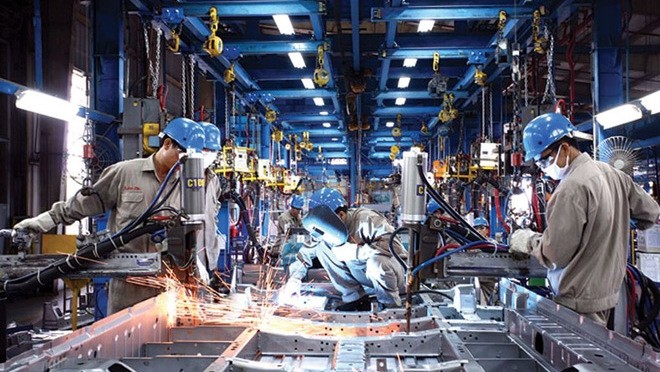High economic outcomes amid difficulties
According to Director General of the General Statistics Office (GSO), Nguyen Bich Lam, Vietnam posted a 6.76% economic growth rate in the first half of this year in addition to macroeconomic stability, positive export achievements, and the lowest level of inflation in three years. The production capacity of the economy was also expanded, creating momentum for the economy to develop further in the following months.
Although the GDP growth rate in the first half of 2019 was lower than rate of the same period in 2018, it was higher than that of the same period in 2011 to 2017, demonstrating the efficiency of the Government solutions to remove difficulties for business activities.
The agricultural, forestry and fishery sector increased by 2.39% in the six-month period, contributing 6% to the overall GDP growth while the industry and construction sector went up by 8.93%, contributing 51.8% and the service sector rose by 6.69%, contributing 42.2% to the overall economic growth.
In the first six months of this year, the agricultural, forestry and fishery sector faced huge difficulties due to the impacts from climate change, the outbreak of African swine fever and foot-and-mouth diseases, and declining prices of export agricultural products. Meanwhile, forestry and fishery products remained good in growth in both production and exports during the period.
The manufacturing industry continued to be the pillar of the economy with a growth rate of 11.18% which was lower than that of the same period in 2018 but higher than the same period in 2012 to 2017. According to Nguyen Bich Lam, the mining sector saw a slight rise of 1.78% after a decrease in three consecutive years thanks to higher coal extraction.
Notably, Vietnam’s total export revenue was reported at US$122.72 billion in the first six months of the year, a year-on-year increase of 7.3% with 22 categories of goods reaching export values of US$1 billion each. Vietnam is currently enjoying a trade surplus with several high potential markets such as the US and the EU which is an encouraging result amid weaker external demands.
Bright spots of the economy
In the first half of 2019, the domestic supply and demand were ensured while foreign direct investment (FDI) and the establishment of new enterprises continued to be a bright spots for the economy.
A record number of newly registered FDI projects were posted in the first six months of this year with 1,723 projects and total registered capital of over US$7.4 billion.
In addition, Vietnam witnessed the establishment of nearly 67,000 enterprises, the highest number ever in the past five years.
Inflation was curbed at 2.64% compared to the same period in 2018, the lowest six-month inflation increase over the past three years which was considered as one of the notable achievements of Vietnam amid the price rise of electricity and essential fuel in the early months of 2019.
Director of the GSO's Department of National Account System Duong Manh Hung said that the economic growth target of 6.6-6.8% for the entirety of 2019 is feasible. Although the manufacturing industry did not expand as highly as in 2018, it is anticipated to maintain a relatively high level during the year as a whole.
Hung noted that surveyed enterprises were optimistic about the business prospects in Vietnam as 88.6% of manufacturing enterprises said that the production and business situation in the third quarter of this year will be better than the second quarter.
However, it is noteworthy that the progress of public investment disbursement will remain low and trade agreements will create multidimensional impacts on import and export activities by the end of this year, Hung added.
















